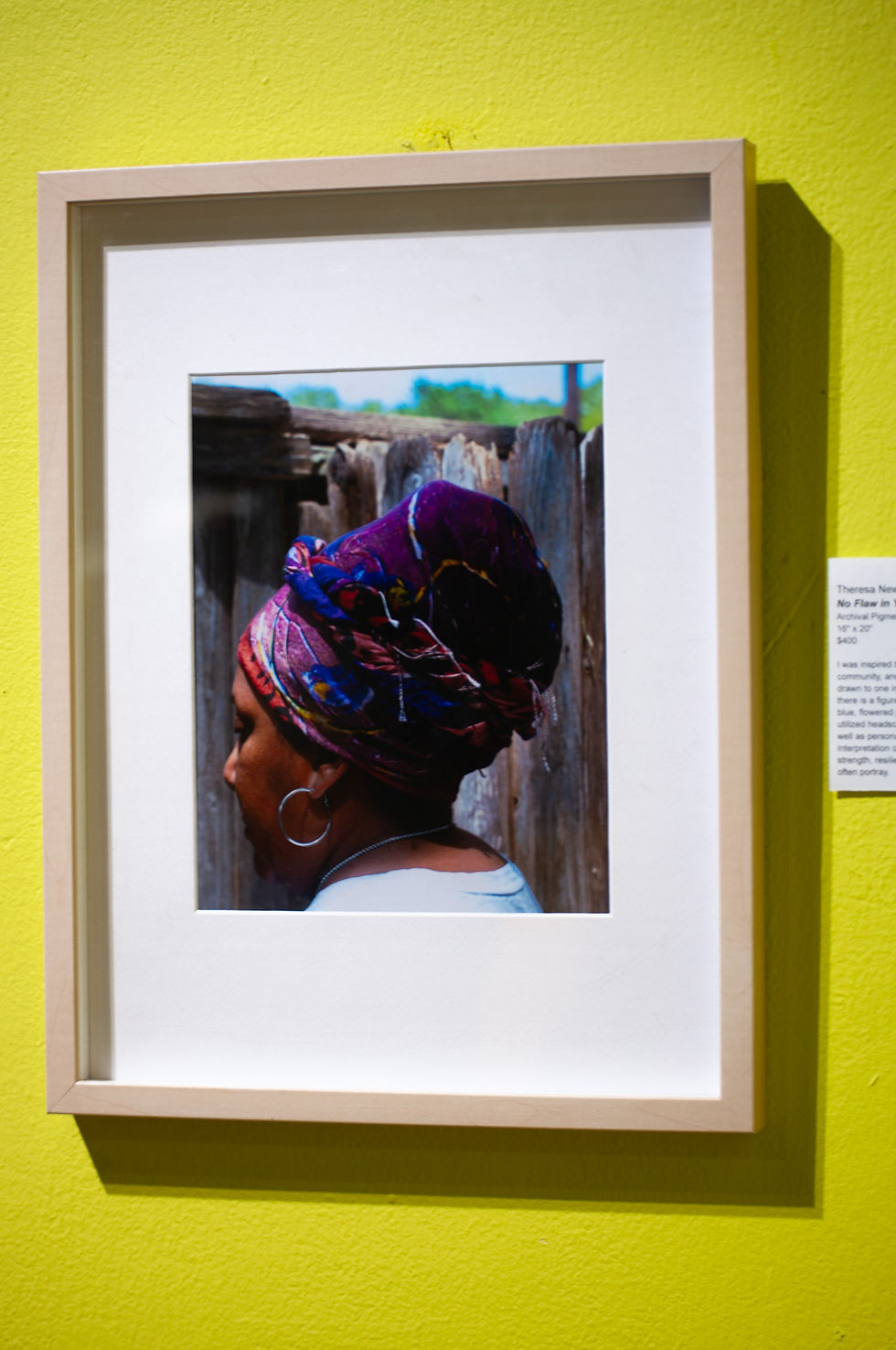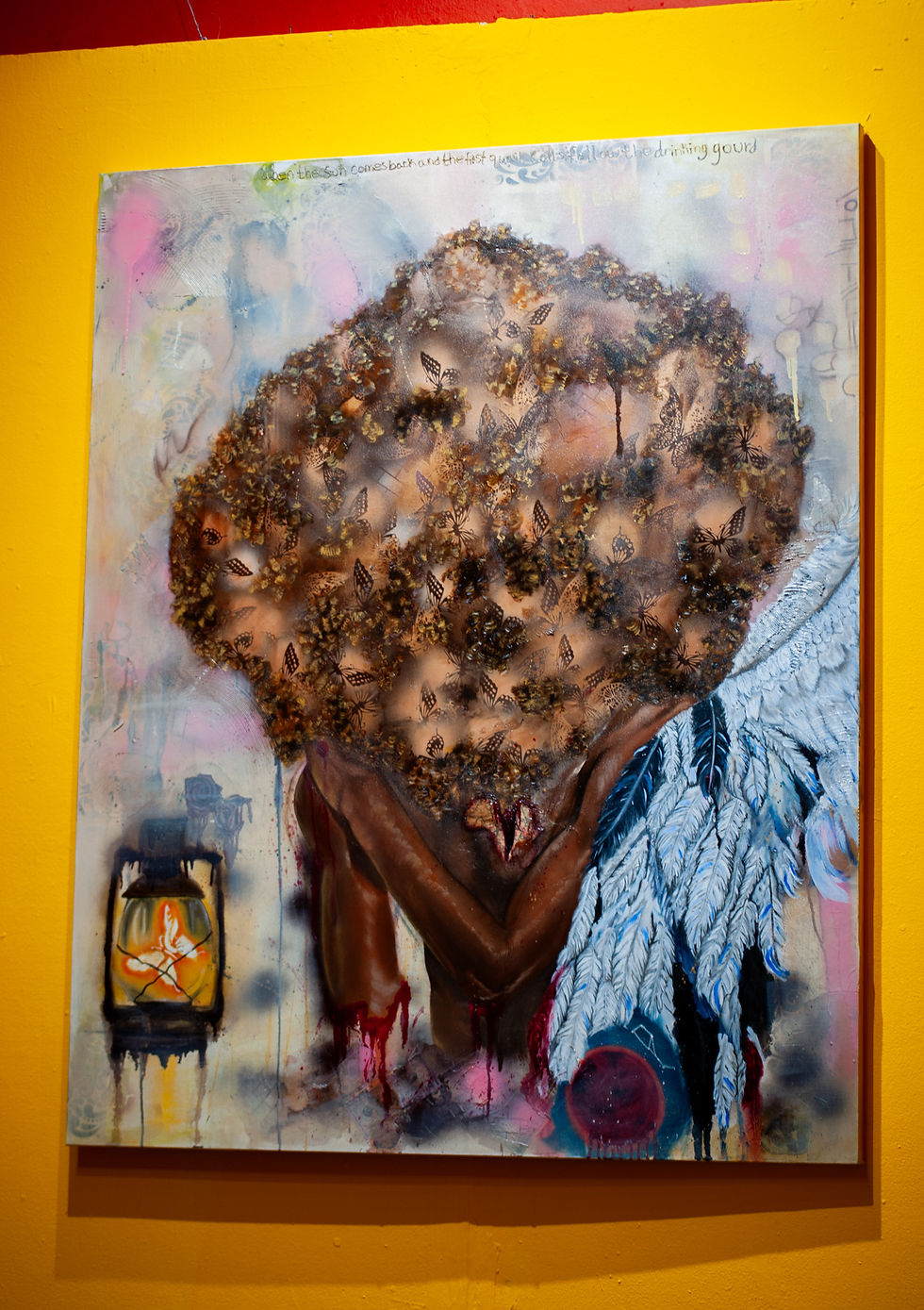Nestled north of downtown San Antonio sits the Esperanza Peace and Justice Center, a multicultural community space. The center currently exhibits From Here y De Allá: Reflections on Elizabeth Catlett Mora, the focus of this review. The exhibition encouraged artists to reflect on the works of Elizabeth Catlett, an African American emigre to Mexico. Catlett’s prints and sculptures explore African American womanhood influenced by Mexican culture, and the artworks in From Here y De Allá reveal multi-faceted identity, the experience of resilience, trauma, joy, and hope of being African American in San Antonio.

Photograph of Theresa Newsome's "No Flaw In You" in From Here y De Allá: Reflections on Elizabeth Catlett Mora at the Esperanza Peace and Justice Center.
The vibrant colors of the headscarf in Theresa Newsome’s No Flaw In You first catches the visitor's eyes. The artwork responds to Catlett’s 2009 print Paulina. Newsome’s work explores the heritage of hair in African American women as a form of self expression. Through portraiture, Newsome captures the history and continuance of resistance and grace. The sitter both reveals and remains anonymous, allowing for any woman to recall their own experience.

Photograph of Dominique Jordan's "Heavy" in From Here y De Allá: Reflections on Elizabeth Catlett Mora at the Esperanza Peace and Justice Center.
Moving further into the space, Dominique Jordan’s Heavy consumes the alcove it hangs in. From the distance it appears to be a full tree with abstracted wings and a lamp. Upon closer inspection, the foliage reveals honey-gold swirls and silhouettes of butterflies birthing from a split and bloodied Africa. It becomes obvious the trunk is a dismembered arms and torso of a black individual, whom the wings spring forth from. There is an abundance of visual intricacies and symbols to unpack the shared, generational trauma in Heavy. Jordan’s statement cites Catlett’s prints of Harriett Tubman (1989) and Survivor (1984) - which this work sits on the adjacent wall - as inspiration of strong women who endure hardships. Jordan references the courage Tubman displayed when she guided slaves to freedom in the cover of night on the Underground Railroad with a lantern lit by a glowing butterfly in the lower-right corner of the painting. Both the monarch butterfly and enslaved individuals endured perilous migratory journeys for survival.
What pulls the exhibit together is the sense of joy and hope found throughout the space. Bright, colorful banners bring life to the space, referencing the traditional papel picado (“perforated paper”) banners from Mexico. Printed on them are phrases associated with current social justice issues, recognizing Catlett’s concern with political activism. From the singular, graceful woman in Margaret Burrough’s Mother of all Mankind (1999), the intimate bond of mother and child in Deborah A. Moore Harris’ Mother + Child = Love, or the camaraderie from women of the past to present in Mary Hendrix Wooldridge and Nicole Brazton’’s Tree of Life, the artists and their work pay homage to Catlett’s legacy.
Visit From Here y de Allá at the Esperanza Center at 922 San Pedro, SATX 78212. The center is open to visits Monday through Friday from 11AM to 7PM, with the exhibit closing September 30.

Great article